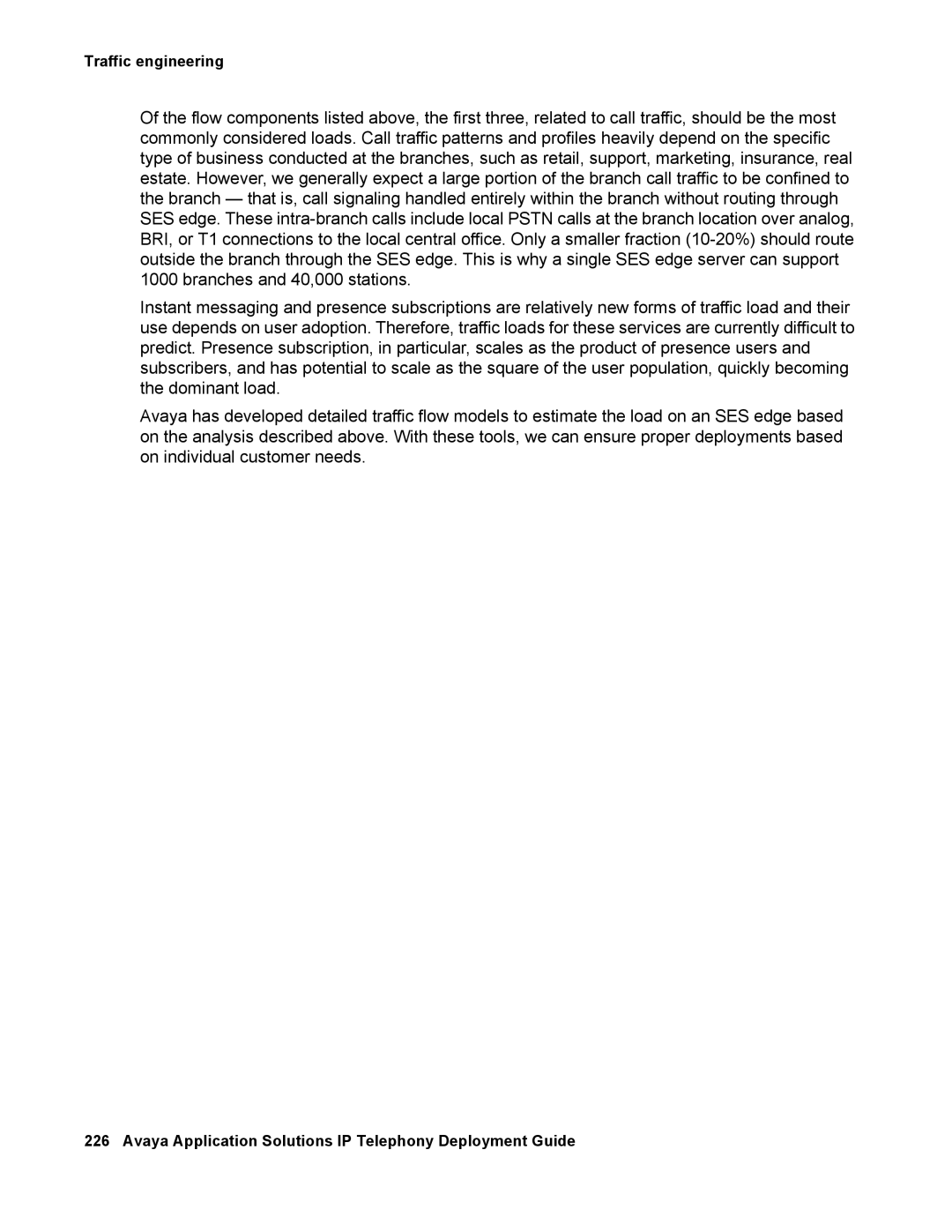Traffic engineering
Of the flow components listed above, the first three, related to call traffic, should be the most commonly considered loads. Call traffic patterns and profiles heavily depend on the specific type of business conducted at the branches, such as retail, support, marketing, insurance, real estate. However, we generally expect a large portion of the branch call traffic to be confined to the branch — that is, call signaling handled entirely within the branch without routing through SES edge. These
Instant messaging and presence subscriptions are relatively new forms of traffic load and their use depends on user adoption. Therefore, traffic loads for these services are currently difficult to predict. Presence subscription, in particular, scales as the product of presence users and subscribers, and has potential to scale as the square of the user population, quickly becoming the dominant load.
Avaya has developed detailed traffic flow models to estimate the load on an SES edge based on the analysis described above. With these tools, we can ensure proper deployments based on individual customer needs.
